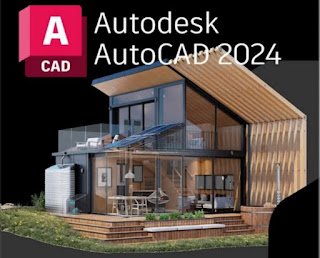Education of AutoCAD 2024
Introduction:
Embark on a transformative journey as we delve into the dynamic world of AutoCAD 2024, the pinnacle of design software. This edition is not just an upgrade; it's a revolution, and your mastery of it is the key to unlocking boundless possibilities in the digital age.
 |
| Education of Autocad 2024 |
Section 1: The Evolution of AutoCAD:
AutoCAD has come a long way since its inception. Understanding its evolution is crucial to appreciating the significance of AutoCAD 2024. From the early days of 2D drafting to the present, where it stands as a comprehensive 3D modeling powerhouse, AutoCAD has been a constant companion for architects, engineers, and designers.
The 2024 version, with its host of innovative features, marks a new chapter. The evolution is not merely cosmetic; it's a response to the changing needs of industries. The software has adapted to the demands of modern design, incorporating smarter tools and more intuitive interfaces. AutoCAD 2024 isn't just an upgrade; it's a leap forward.
 |
| Evolution of Autocad |
Section 2: Key Features of AutoCAD 2024:
AutoCAD 2024 introduces game-changing features that redefine the design experience. Enhanced collaboration tools take teamwork to new heights, allowing seamless integration of ideas from various contributors. The result is a design process that is not only faster but also more cohesive.
The software's streamlined workflows empower designers to bring their visions to life with unprecedented precision. Whether it's the ability to navigate complex 3D models effortlessly or the integration of artificial intelligence for smarter design suggestions, AutoCAD 2024 is designed to make the creative process smoother and more efficient.
.png) |
| Key Features of Autocad 2024 |
Section 3: Learning Resources and Courses:
To master AutoCAD 2024, you need more than just the software – you need the right education. Fortunately, a plethora of learning resources and courses cater to every skill level. From online tutorials to comprehensive certification programs, these resources ensure that you can harness the full potential of AutoCAD 2024.
Whether you're a novice eager to grasp the basics or a seasoned professional looking to stay current with the latest features, there's a learning path for you. The educational ecosystem surrounding AutoCAD 2024 is as diverse as the design possibilities it offers.
 |
| Learning and resources of Autocad 2024 |
Section 4: Industry Applications and Job Opportunities:
The impact of AutoCAD 2024 extends far beyond the virtual drafting board. Explore the diverse applications of this powerful tool across industries – from architecture and construction to manufacturing and beyond. Its versatility makes it an invaluable asset in various professional settings.
Mastering AutoCAD 2024 isn't just about acquiring a skill; it's about gaining a competitive edge in the job market. The demand for professionals well-versed in the latest design technologies is on the rise, and AutoCAD 2024 proficiency can open doors to exciting career opportunities.
 |
| Job opportunities |
Conclusion:
In conclusion, the education of AutoCAD 2024 is not merely an option; it's a necessity in the ever-evolving landscape of design. As you embark on your journey to master this cutting-edge software, remember that staying ahead in your profession requires an investment in skills and continuous learning.
What are your thoughts on AutoCAD 2024? Have you experienced its transformative power in your design projects? Share your insights and join the conversation in the comments below. Let's build a community of AutoCAD enthusiasts committed to pushing the boundaries of design excellence!


.bmp)

.bmp)







































